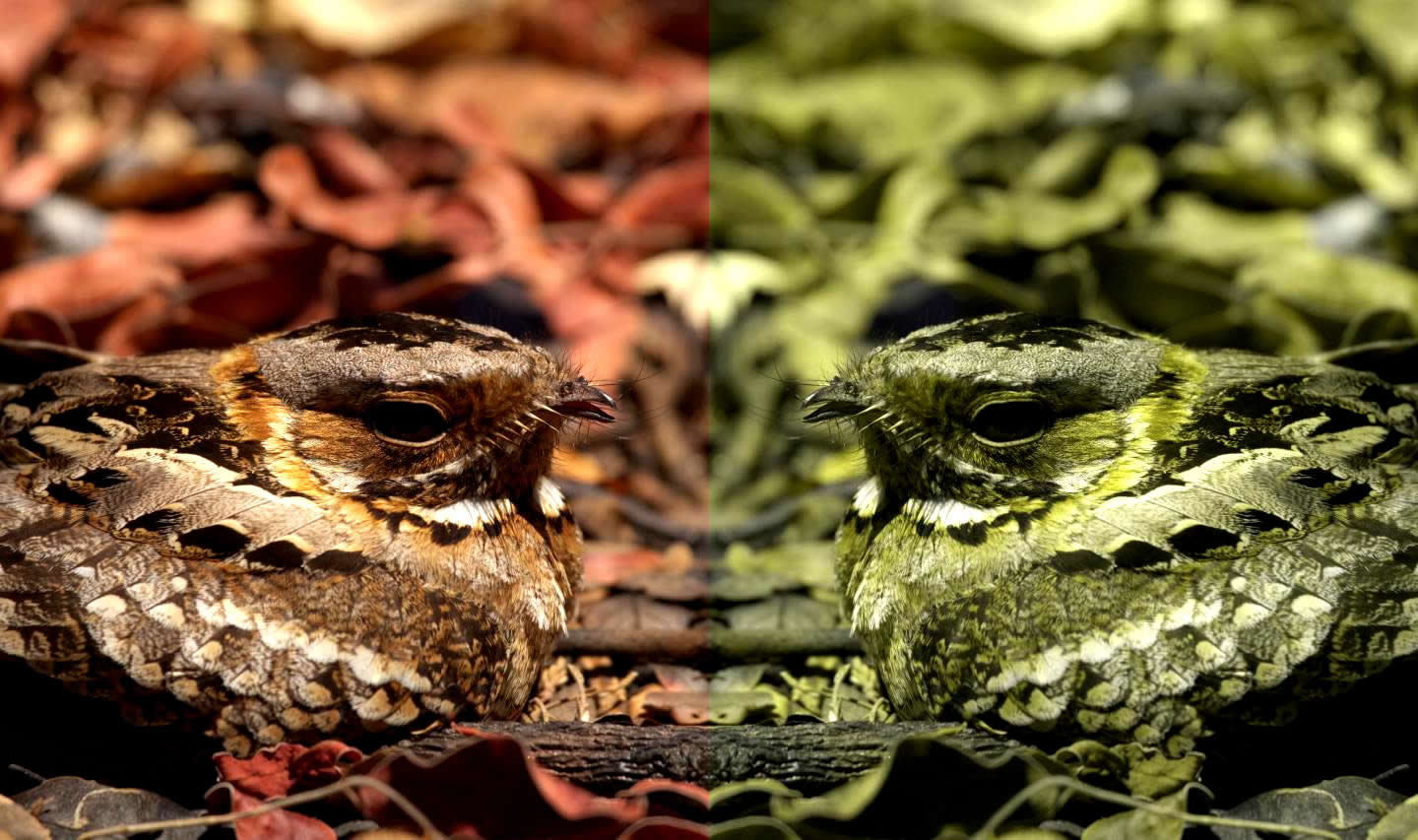|
|
Game helps us understand animal camouflage
Computer games played by more than 30,000 people helped scientists understand animal camouflage and color vision.
One of the main vision differences in nature is the ability to see color. Some marine mammals have only one type of receptor cell in their eyes, so cannot differentiate between colors. Most mammals are dichromats, meaning they have two types of color receptor cells in their eyes. But humans, some fish and bees are trichromats and have three types of color cells. Many birds are tetrachromats - so they have four types of color receptor cell - and some invertebrates have even more. And that is a large group: insects; crabs, lobsters; snails, clams, octopuses; starfish, sea-urchins; jellyfish, and worms. The majority of animal species are invertebrates; one estimate puts the figure at 97%.
Researchers from the University of Exeter wanted to know why? How does color vision affect an animals' ability to detect camouflaged prey.
Gamers were shown photographs and asked to find camouflaged nightjar birds or nests containing eggs - either in normal color or in a limited color palatte used by dichromatic predators like mongooses.
The prevalence of red-green color blindness in many animals (also the most common form of color blindness in humans) led scientists to believe there must be some evolutionary advantage to seeing in just two primary colors as opposed to three.
Finding camouflaged prey has been assumed to be easier for dichromats with red-green color blindness, as color is known to interfere with an animals' ability to detect camouflaged objects.
The Exeter team was surprised to discover how trichromats found the nightjars and eggs faster than simulated dichromats.
However, there were large differences in how dichromats' capture times as affected by camouflage types — such as pattern and brightness — when compared to trichromats. Over the course of the game, dichromats improved faster than trichromats, so that by the end of the game dichromats performed equally to tetrachromats. It remains to be seen whether dichromats could eventually learn to overcome the eggs' camouflage better than trichromats.
"This research demonstrates the power of citizen science - using help from online participants to tackle novel scientific questions.
"Our findings suggest the role of color perception in spotting camouflaged objects is complex, and this could help explain why color vision with just two receptor types is so widespread in nature."
Jolyon Troscianko PhD, University of Exeter's Centre for Ecology and Conservation, School of Biosciences, Penryn Campus, Penryn, United Kingdom, and lead author.
Though dichromats can only see a limited range of colors, they could be better at differentiating between light and dark, and at finding hidden objects - an advantage for certain predators. Going to Zambia, the authors studied the camouflage of nightjar birds and other ground-nesters, where the nests are hunted by trichromatic animals such as humans, vervet monkeys and baboons, as well as by dichromats such as mongooses.
"Camouflage is probably the most common type of defence used by prey animals in nature, but the survival advantage it provides depends on the sensory abilities of the animals that hunt them. We need to know more about how camouflage may be tuned to predator vision. And, if and when some types allow predators to detect camouflaged prey."
Martin Stevens, Associate Professor of Sensory and Evolutionary Ecology at the University of Exeter, United Kingdom.
The paper, entitled "Relative advantages of dichromatic and trichromatic color vision in camouflage breaking", is published in the journal Behavioural Ecology.
The games used in the research are still available to be played online.
Abstract
There is huge diversity in visual systems and color discrimination abilities, thought to stem from an animal’s ecology and life history. Many primate species maintain a polymorphism in color vision, whereby most individuals are dichromats but some females are trichromats, implying that selection sometimes favors dichromatic vision. Detecting camouflaged prey is thought to be a task where dichromatic individuals could have an advantage. However, previous work either has not been able to disentangle camouflage detection from other ecological or social explanations, or did not use biologically relevant cryptic stimuli to test this hypothesis under controlled conditions. Here, we used online “citizen science” games to test how quickly humans could detect cryptic birds (incubating nightjars) and eggs (of nightjars, plovers and coursers) under trichromatic and simulated dichromatic viewing conditions. Trichromats had an overall advantage, although there were significant differences in performance between viewing conditions. When searching for consistently shaped and patterned adult nightjars, simulated dichromats were more heavily influenced by the degree of pattern difference than were trichromats, and were poorer at detecting prey with inferior pattern and luminance camouflage. When searching for clutches of eggs—which were more variable in appearance and shape than the adult nightjars—the simulated dichromats learnt to detect the clutches faster, but were less sensitive to subtle luminance differences. These results suggest there are substantial differences in the cues available under viewing conditions that simulate different receptor types, and that these interact with the scene in complex ways to affect camouflage breaking.
Keyword search
background matching, camouflage, citizen science, color vision, learning, polymorphic trichromacy, sensory ecology.
Return to top of page
|
|
|
Apr 17, 2017 Fetal Timeline Maternal Timeline News News Archive
 The Nightjar bird as seen by (LEFT) Trichromat - humans, some fish and bees
The Nightjar bird as seen by (LEFT) Trichromat - humans, some fish and bees
or (RIGHT) Dichromat - most mammals
Image Credit: University of Exeter (Contrast adjusted higher)
|



